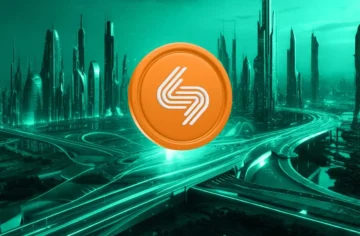When Bitcoin launched in 2009, it introduced a radical idea: money without banks, borders, or centralized control.
But as revolutionary as it was, Bitcoin had one major flaw for everyday use: extreme volatility.
Prices could soar one day and crash the next.
As exciting as that was for traders, it made blockchain adoption for real-world transactions almost impossible.
The crypto world needed a new kind of asset — something stable enough to bridge blockchain technology and the global economy.
And so, the idea of stablecoins was born.
The Early Days: Solving the Volatility Problem
The first generation of stablecoins emerged with a simple promise: One token, one dollar.
The most famous early example was Tether (USDT), launched in 2014.
Tether introduced the idea of backing a digital token with real-world reserves — primarily U.S. dollars held in bank accounts.
It wasn’t perfect.
Critics raised questions about transparency and reserve audits.
But the idea worked:
- Traders finally had a safe haven during market crashes.
- Exchanges could offer "crypto dollars" without needing banks.
- Crypto ecosystems had a reliable unit of account for the first time.
Stablecoins like USDT, and later TrueUSD and USDC, quickly became critical infrastructure for the growing blockchain economy.
The Second Wave: Experimentation and Innovation
As crypto matured, new projects sought to improve on the original stablecoin model.
DAI was launched by MakerDAO in 2017 — a fully decentralized stablecoin backed by crypto collateral, not dollars.
It introduced an entirely on-chain model, where stability was maintained by overcollateralization and smart contracts.
This was a major evolution:
- No single company controlled DAI.
- No need for banks to hold reserves.
- Complete transparency on the blockchain.
However, DAI and similar models introduced new complexities:
- Users needed to understand collateral ratios and liquidation risks.
- Stability was maintained by market mechanisms, not by simple dollar backing.
Meanwhile, experiments with algorithmic stablecoins (like Terra’s UST) pushed the boundaries even further — until spectacular failures showed the risks of relying solely on incentives and trust, without solid reserves.
The Lessons Learned: Stability Must Be Built, Not Assumed
The collapse of Terra’s UST in 2022 was a defining moment.
It wiped out billions of dollars and shattered confidence in algorithmic models.
But it also made one thing crystal clear:
True stability demands more than good intentions.
The industry learned that real stablecoins must offer:
- Transparent backing (real reserves or provable mechanisms)
- Resilient, sustainable models
- On-chain accountability
- Community governance wherever possible
Simply put, stability must be earned, proven, and maintained every day.
Stablecoins Today: The Backbone of Crypto
Today, stablecoins are no longer experimental.
They are the foundation of decentralized finance (DeFi), cross-border payments, tokenized real-world assets, blockchain gaming, and global logistics ecosystems.
Billions of dollars move daily through stablecoins like USDT, USDC, DAI — and emerging models that prioritize transparency and resilience.
Stablecoins enable:
- Instant, borderless payments
- Predictable trading and lending platforms
- New forms of rewards and incentives
- Cross-industry integration (finance, supply chains, gaming, healthcare)
Without stablecoins, much of what makes blockchain valuable today simply wouldn’t function.
The Future: Beyond Stability to Trust
The next generation of stablecoins isn’t just about holding a dollar peg.
It’s about holding user trust.
- Transparency will be non-negotiable.
- Community governance will matter more than corporate promises.
- Decentralized ecosystems will demand stable assets that are as open and verifiable as the blockchains they run on.
The rise of stablecoins has shown that blockchain needs stability to thrive.
The future will show that stability alone isn’t enough — trust, transparency, and resilience will define the winners.
Conclusion
From their humble beginnings as an experiment to their role today as the beating heart of blockchain economies,
stablecoins have become essential.
They are the invisible force making decentralized dreams possible:
payments, contracts, supply chains, rewards, and communities — all powered by money that moves at the speed of the internet but holds the stability of the real world.
As blockchain continues its journey into every industry and every corner of life, one truth becomes clear:
Stable, transparent money isn’t just a convenience. It’s the cornerstone of the future.





